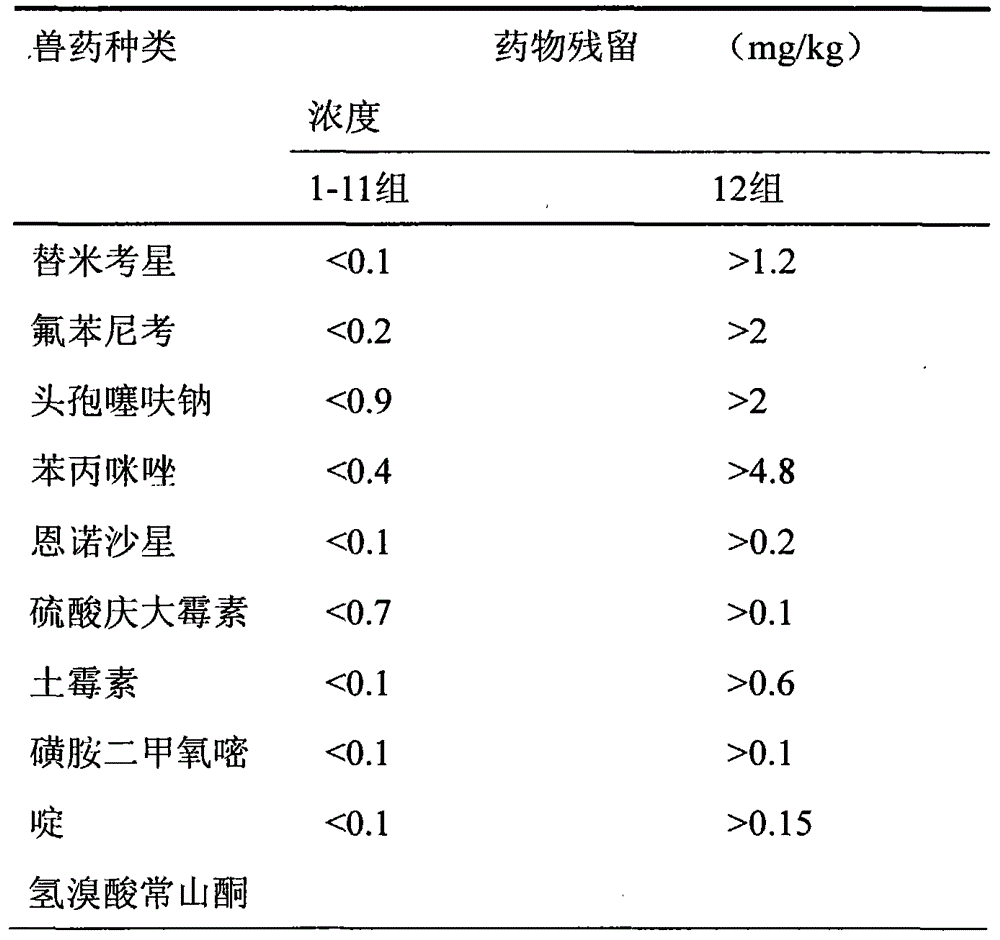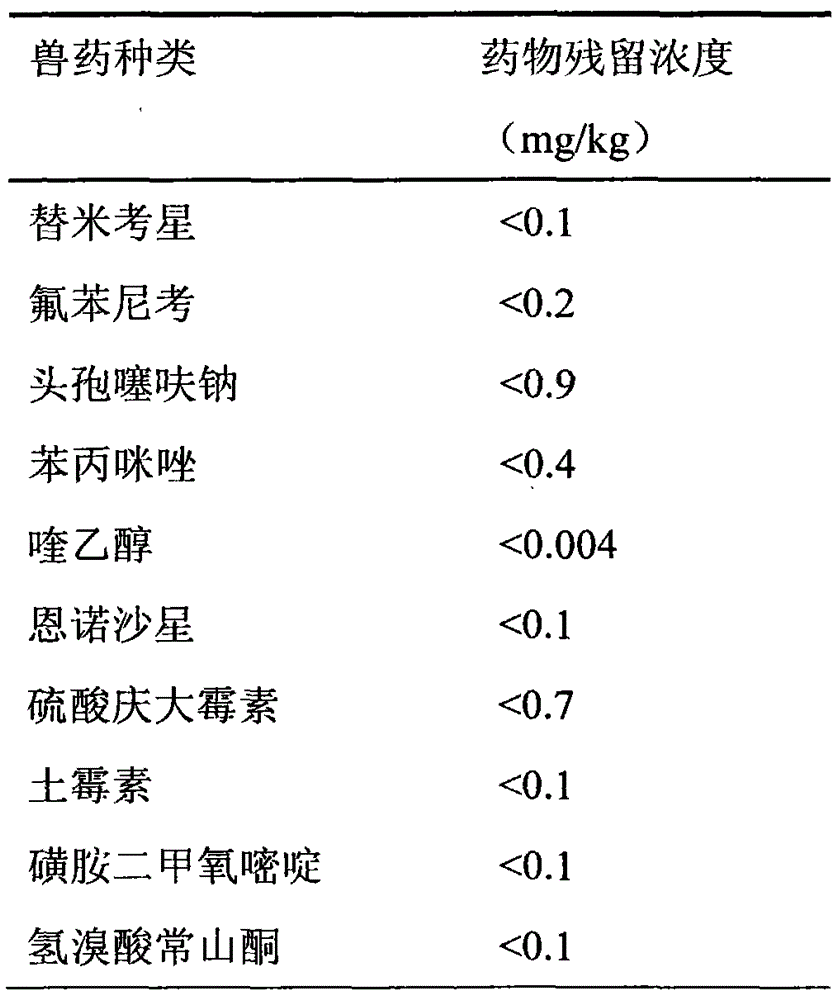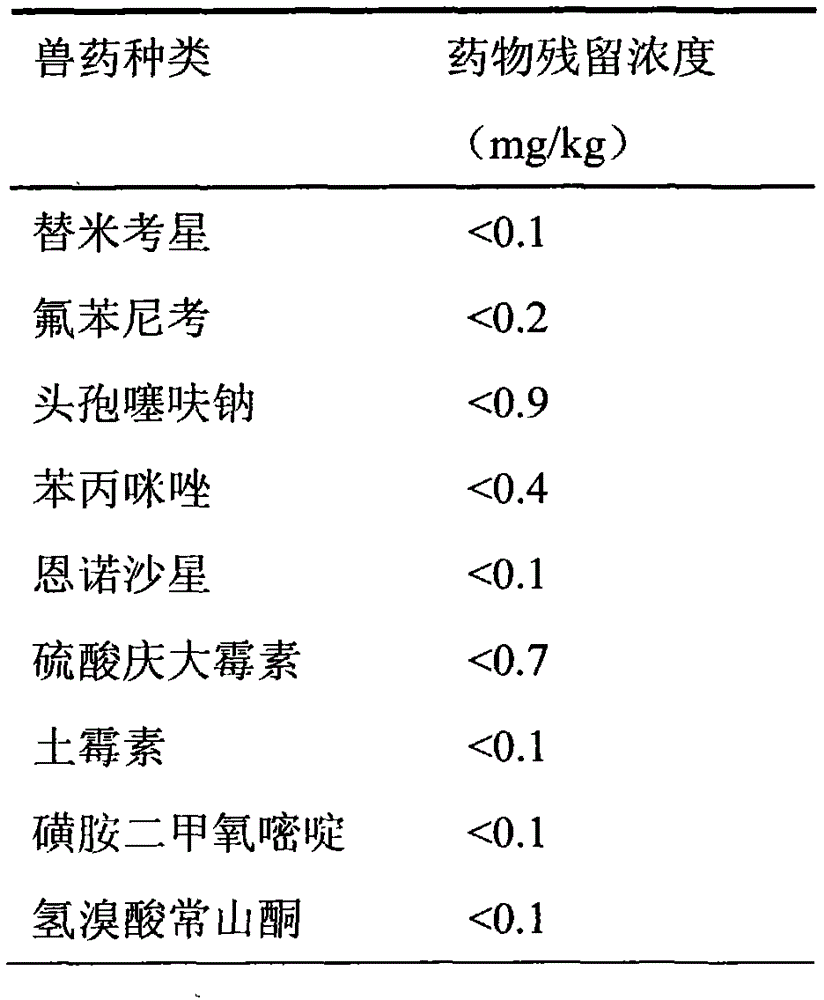Natural compound feed additive for removing veterinary drug residues
A technology of feed additives and natural compounds, applied in the direction of animal feed, animal feed, application, etc., can solve the problems of increasing the difficulty of treatment, the body is prone to infectious diseases, and destroying the balance of microorganisms in the gastrointestinal tract, so as to ensure safety and obtain a wide range of materials. , the effect of low price
- Summary
- Abstract
- Description
- Claims
- Application Information
AI Technical Summary
Problems solved by technology
Method used
Image
Examples
Embodiment 1
[0012] When preparing the mixture of the present invention, proanthocyanidin, astaxanthin, resveratrol, curcumin, allicin, laver polysaccharide, laver polyphenol, phycobiliprotein, tea polyphenol, quercetin, chitosan and tangeretin After the raw materials are filtered through a 100-mesh sieve, 1 kg of each of the above raw materials is weighed, and then placed in a blender and fully mixed to obtain a 12 kg mixture. When in use, the mixture and broiler feed were uniformly mixed at a mass ratio of 1:100 to obtain 1212kg of mixed feed. Select tilmicosin, florfenicol, ceftiofur sodium, benzoimazole, enrofloxacin, gentamicin sulfate, oxytetracycline, sulfadimethoxine, and erythromycin hydrobromide to exceed There are 220 chickens in the flock of relevant limit standards, and 20 chickens with each drug exceeding the standard, a total of 11 groups. 20 healthy 5-week-old broilers were selected as the 12th group. Groups 1-11 were fed with the natural compound proanthocyanidins, astax...
Embodiment 2
[0016] Select tilmicosin, florfenicol, ceftiofur sodium, benzoimazole, enrofloxacin, gentamicin sulfate, oxytetracycline, olaquindox, sulfadimethoxine and hydrobromic acid There were 10 2-month-old pigs in pig farms whose residues of fusanone exceeded the national standard limit, totaling 220 pigs. Take proanthocyanidins, astaxanthin, resveratrol, curcumin, allicin, laver polysaccharides, laver polyphenols, phycobiliprotein, tea polyphenols, quercetin, chitosan and tangeretin through a 100-mesh sieve Afterwards, 5 kg of each of the above-mentioned raw materials was weighed, put in a stirrer and fully mixed to obtain a 60 kg mixture. When in use, the mixture was uniformly mixed with the original pig feed at a mass ratio of 1:300 to obtain 18060 kg of mixed feed. The feeding mode and place were kept as they were, and they were fed continuously for 1 week. After slaughter, tilmicosin, florfenicol, ceftiofur sodium, benzoimazole, enrofloxacin, gentamicin sulfate, and oxytetracycl...
Embodiment 3
[0020] Select tilmicosin, florfenicol, ceftiofur sodium, phenimizole, enrofloxacin, gentamicin sulfate, oxytetracycline, sulfadimethoxine and ethosin hydrobromide in the tested muscle tissue 20 laying hens with excessive ketone content. Take proanthocyanidins, astaxanthin, resveratrol, curcumin, allicin, laver polysaccharides, laver polyphenols, phycobiliprotein, tea polyphenols, quercetin, chitosan and tangeretin through a 100-mesh sieve Afterwards, each weighed 1 kg, put the above-mentioned natural product in a blender and mix well to obtain 12 kg of the mixture. When in use, the mixture is uniformly mixed with the feed used by chickens at a mass ratio of 1:400. After continuous feeding of laying hens for 1 week, the muscle tissue of slaughtered laying hens was tested for tilmicosin, florfenicol, ceftiofur sodium, benzoimazole, enrofloxacin, gentamicin sulfate, and oxytetracycline The results show that the above-mentioned veterinary drug residues in the muscle tissue of la...
PUM
 Login to View More
Login to View More Abstract
Description
Claims
Application Information
 Login to View More
Login to View More - R&D
- Intellectual Property
- Life Sciences
- Materials
- Tech Scout
- Unparalleled Data Quality
- Higher Quality Content
- 60% Fewer Hallucinations
Browse by: Latest US Patents, China's latest patents, Technical Efficacy Thesaurus, Application Domain, Technology Topic, Popular Technical Reports.
© 2025 PatSnap. All rights reserved.Legal|Privacy policy|Modern Slavery Act Transparency Statement|Sitemap|About US| Contact US: help@patsnap.com



